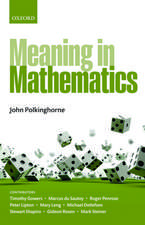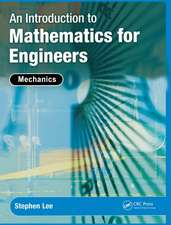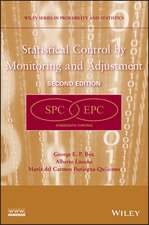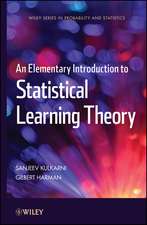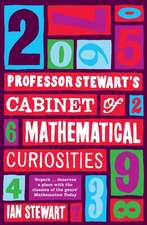Invitation to the Mathematics of Fermat-Wiles
Autor Yves Hellegouarchen Limba Engleză Hardback – 24 sep 2001
This book can be used in introduction to mathematics theories courses and in special topics courses on Fermat's last theorem. It contains themes suitable for development by students as an introduction to personal research as well as numerous exercises and problems. However, the book will also appeal to the inquiring and mathematically informed reader intrigued by the unraveling of this fascinating puzzle.
- Rigorously presents the concepts required to understand Wiles' proof, assuming only modest undergraduate level math
- Sets the math in its historical context
- Contains several themes that could be further developed by student research and numerous exercises and problems
- Written by Yves Hellegouarch, who himself made an important contribution to the proof of Fermat's last theorem
Preț: 439.16 lei
Nou
Puncte Express: 659
Preț estimativ în valută:
84.06€ • 91.34$ • 70.66£
84.06€ • 91.34$ • 70.66£
Carte tipărită la comandă
Preluare comenzi: 021 569.72.76
Specificații
ISBN-13: 9780123392510
ISBN-10: 0123392519
Pagini: 400
Dimensiuni: 172 x 244 x 28 mm
Greutate: 0.71 kg
Editura: ELSEVIER SCIENCE
ISBN-10: 0123392519
Pagini: 400
Dimensiuni: 172 x 244 x 28 mm
Greutate: 0.71 kg
Editura: ELSEVIER SCIENCE
Public țintă
Researchers, professors, and students in mathematics.Cuprins
1. Paths
2. Elliptic Functions
3. Numbers and groups
4. Elliptic Curves
5. Modular Forms
6. New Paradigms, New Enigmas
2. Elliptic Functions
3. Numbers and groups
4. Elliptic Curves
5. Modular Forms
6. New Paradigms, New Enigmas
Recenzii
"This text provides a sweeping introduction to all those mathematical topics, concepts, methods, techniques, and classical results that are necessary to understand Andrew Wiles's theory culminating in the first complete proof of Fermat's last theorem. The text is accessible, without compromising the rigor of its mathematical exposition, to reasoned undergraduate students, at least so for the most part it can serve as the basis for various teaching courses. It sets the whole discussion in a fascinating, generally educating historical context, thereby travelling - metaphorically speaking - through the centuries of mathematical history. No doubt, it is a true blessing that the English translation of this unique book is now at hand for a much wider public." --Werner Kleinert (Berlin) in Zentralblatt MATH 1036



